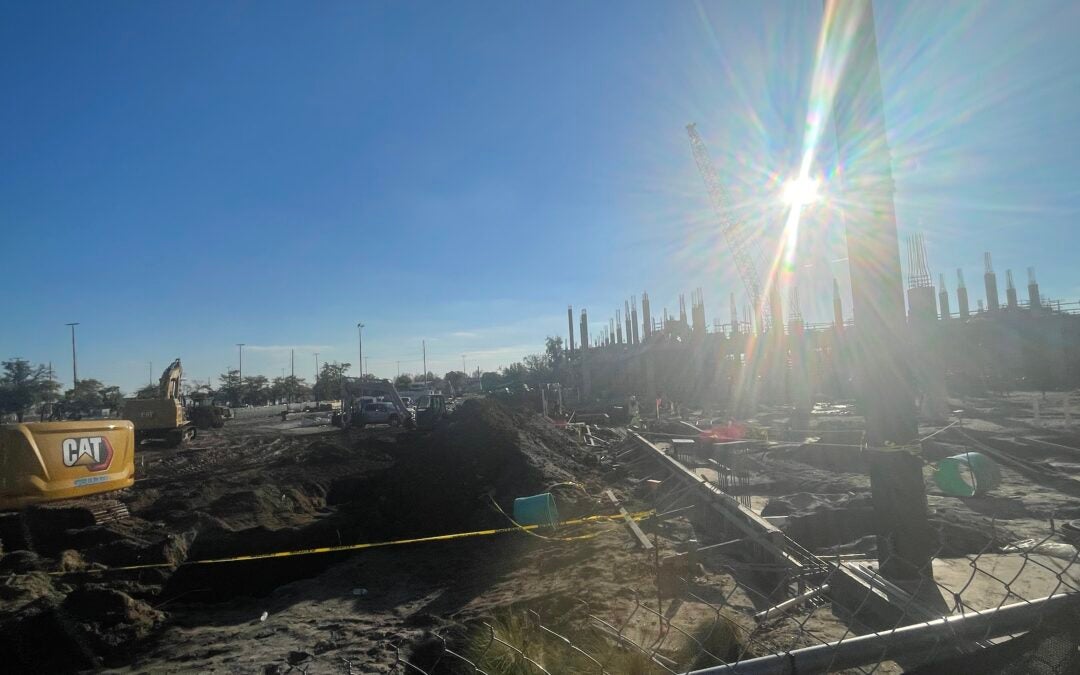A new study at the Georgia Cancer Center, or GCC, is shedding light on local food disparities, particularly the prevalence of what are called “food swamps.”
Food deserts have become a relatively common term referring to areas where access to affordable, nutritious food — such as fresh produce — is limited. Food swamps, however, are areas where the food options are largely unhealthy.
“Food deserts are where you live more than one mile from a grocery store in an urban area, or more than 10 miles in a rural area,” said Dr. Malcolm Bevel, assistant professor in the Cancer Prevention, Control and Population Health program at the GCC. “The only difference between a food desert and a food swamp is the type of food you have access to.”
While food deserts may be far from grocery stores, food swamps are all too close to stores with more proinflammatory, unhealthy food types.
“Fast food restaurants, convenience stores, liquor stores, things of that nature,” said Bevel.
His recently published study, “Association of Food Deserts and Food Swamps With Obesity-Related Cancer Mortality in the US,” is the result of research to quantify and analyze the nationwide impact of food environments to obesity and obesity-related cancers.
The study found an association between counties that scored highly on the food swamp index had high obesity-related cancer mortality rates over the last 10 years.
“The implications of food swamps became clear once we observed 77% higher odds of obesity-related cancer mortality for areas with higher concentration of unhealthy food options,” said Dr. Justin Moore, assistant professor at MCG and co-author of the study. “We know that from prior studies that there has been a growing incidence or rise of food swamps across the United States, and these rates have tended to mirror the trends we see in adults living with obesity.”

The data reflects on areas in the CSRA, including downtown Augusta, which the study shows as a food swamp. Farmers markets were included in the scoring system, alongside supermarkets and places like Walmart.
“I don’t know if it’s made enough of a dent,” said Bevel about the efforts of farmers markets, considering factors such as growing seasons and how often the markets open. “I know they’re trying, and we are grateful for those resources, but there needs to be more done at the city, local and state levels in terms of providing these resources.”
Bevel surmises that the influx of unhealthy food options in certain neighborhoods indicates efforts to restrict access to healthier options in those areas, such as via gentrification, redlining and price gouging.
He notes a tendency for sodas and sugary drinks to be less expensive in food swamp areas, whereas fresh fruit and vegetables tend to be on sale in Kroger or Publix on Washington Road, or in Evans.
“I’ve done some qualitative work already and residents in the county were speaking on how the Kroger on 15th Street was closed about six years ago now, and they haven’t had any fresh food grocery store ever since,” he said. “They’ve been asking for it, and there’s nothing that has really come about from that.”
Bevel notes that the concerns the data brings to light go beyond obesity as an epidemic, but also 13 different types of cancer — including thyroid, liver, prostate, postmenopausal breast cancer, as well as gut inflammation — and their connection to economic and even racial disparities.
“Research and public health initiatives need to move away from blaming individuals for ‘not selecting healthy options’ and ‘not adhering to healthy lifestyle behaviors’ when people live in environments with a depletion of healthy food options and overabundance of unhealthy food choices,” said Moore. “This work supports future efforts that work towards sustainable approaches within communities to improve healthy food options that allow for the reduction of cancer risks.”
The two epidemiologists have also recently completed a related analysis, expected to be published within six months, on the racial inequalities in food deserts and swamps and early-onset colorectal cancer death. That research found that Black people had a 25% increased risk of dying from early onset colorectal cancer, compared to non-White Hispanic people, regardless of where they lived.
Bevel hopes that the availability of the research data will help spur “good trouble” that inspires serious engagement from local governments and policy change.
“If you really care about the people, whether it be Georgians or whether it be all Americans, just start instituting certain policy changes,” said Bevel, noting examples such as incentivizing stores to stay in certain neighborhoods, and investing the community through walkability infrastructure. “Instead of taking the talking points of the CDC and putting ‘the exercise on the day’ on your website, invest. You have the funds to be able to do it. Just do it.”
Skyler Q. Andrews is a staff reporter for The Augusta Press. Reach him at skyler@theaugustapress.com.











